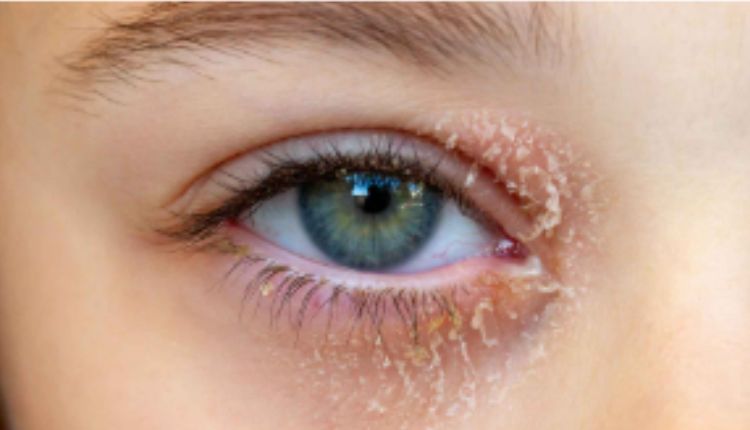Eye health issues like dry eyes, cataracts, and itchy eyelids are common conditions that can significantly affect daily life. Identifying the causes and understanding the available treatments are essential for maintaining clear vision and overall comfort. Here’s what you need to know about these eye conditions and how they relate to one another.
Dry Eyes: Causes and Treatment
Dry eyes occur when the eyes do not produce enough tears or when the tears evaporate too quickly. This condition can cause discomfort and, if untreated, may lead to complications such as inflammation or damage to the cornea.
Common Symptoms:
- Burning or stinging sensation
- Redness and irritation
- Blurred vision, especially after reading or using screens
- Sensitivity to light
- A feeling of something gritty in the eye
Causes:
- Environmental Factors: Dry climates, wind, or prolonged screen time.
- Aging: Tear production often decreases with age.
- Medical Conditions: Autoimmune diseases like Sjögren’s syndrome or conditions like diabetes.
- Medications: Certain antihistamines, antidepressants, or decongestants can reduce tear production.
- Contact Lens Use: Prolonged wear can exacerbate dryness.
Treatment Options:
- Artificial Tears: Over-the-counter eye drops provide immediate relief.
- Prescription Eye Drops: Medications like cyclosporine (e.g., Restasis) to increase tear production.
- Lifestyle Adjustments: Using a humidifier, taking screen breaks, and wearing wraparound sunglasses to protect against wind.
- Punctal Plugs: Tiny devices inserted into tear ducts to retain tears on the eye’s surface.
Cataracts: Symptoms and Treatment
A cataract is the clouding of the eye’s natural lens, leading to vision impairment. Cataracts often develop slowly and are a leading cause of vision loss, particularly in older adults.
Common Symptoms:
- Blurred or dim vision
- Difficulty seeing at night
- Sensitivity to glare from lights
- Fading or yellowing of colors
- Double vision in one eye
Causes:
- Aging: Most cataracts are age-related.
- Sun Exposure: Prolonged exposure to ultraviolet (UV) light without protection.
- Medical Conditions: Diabetes significantly increases the risk of cataracts.
- Medications: Long-term use of corticosteroids.
- Eye Injuries or Surgery: Trauma or past surgeries can lead to secondary cataracts.
Treatment Options:
- Early Stages: Glasses, stronger lighting, and anti-glare sunglasses may temporarily improve vision.
- Advanced Stages: Surgery is the only effective treatment. Cataract surgery involves removing the cloudy lens and replacing it with a clear artificial lens.
Dry Eyes and Cataracts: Are They Related?
While dry eyes and cataracts are separate conditions, they can coexist, especially in older adults. Cataract surgery can sometimes exacerbate dry eyes temporarily due to changes in tear production. It’s important to address dry eye symptoms before and after cataract surgery to ensure optimal healing and visual outcomes.
Itchy Eyelids: Causes and Relief
Itchy eyelids are often a symptom of irritation or inflammation and can accompany conditions like dry eyes.
Common Causes:
- Allergies: Reactions to pollen, dust, or pet dander can irritate the eyelids.
- Blepharitis: A chronic condition causing inflammation at the base of the eyelashes.
- Contact Dermatitis: Reactions to skincare products or makeup.
- Infections: Bacterial or viral infections, such as styes or conjunctivitis.
Symptoms to Watch For:
- Redness or swelling
- Crusting at the eyelid margins
- Watery or sticky discharge
- Flaking skin near the eyelashes
Treatment Options:
- Warm Compresses: Relieve inflammation and soften crusting.
- Proper Hygiene: Cleaning eyelids with a gentle, hypoallergenic cleanser.
- Antihistamines: For allergy-related itching.
- Prescription Medications: Antibiotic ointments or steroid eye drops for more severe cases.
Managing Eye Conditions Together
For individuals experiencing dry eyes, cataracts, and itchy eyelids simultaneously, an integrated approach to treatment is key. Working with an eye care professional ensures all conditions are addressed effectively without exacerbating one another.
Tips for Combined Management:
- Use preservative-free artificial tears to avoid irritation.
- Follow a skincare and eyelid hygiene routine to prevent infections or allergies.
- Wear UV-protective sunglasses to slow cataract progression and protect against environmental dryness.
- Schedule regular eye exams to monitor cataracts and evaluate other conditions.
When to See a Doctor
While occasional dryness or itching can be managed with over-the-counter remedies, persistent or worsening symptoms warrant professional evaluation. Seek medical attention if you experience:
- Sudden vision changes or loss
- Severe eye pain or redness
- Chronic dry eye symptoms unresponsive to home remedies
- Persistent eyelid swelling or irritation
Conclusion
Eye health is vital to your overall well-being. Addressing conditions like dry eyes, cataracts, and itchy eyelids early can prevent complications and enhance your quality of life. With proper care, including regular eye exams and tailored treatments, you can maintain clear, comfortable vision for years to come.

